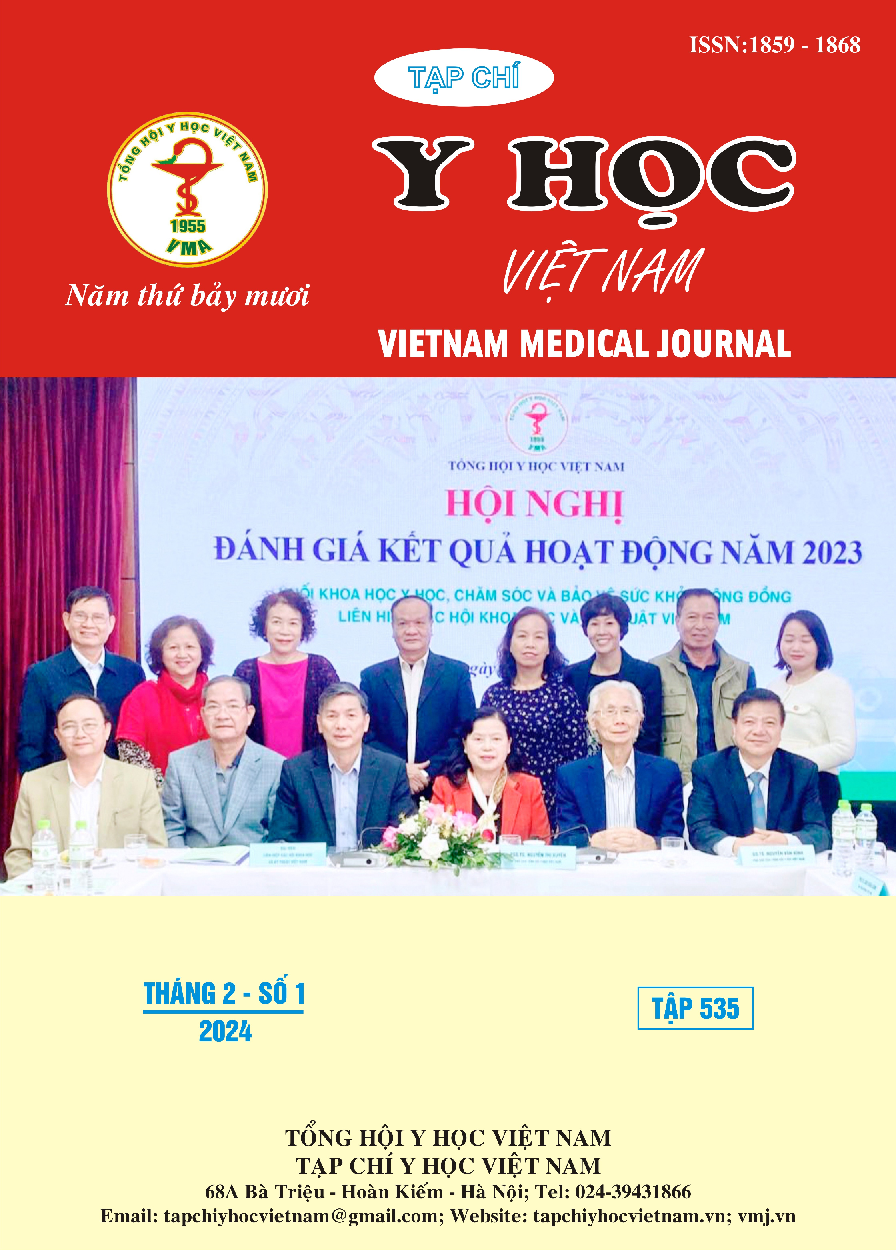SITUATION OF USING TRADITIONAL MEDICINE TREATMENT METHODS IN SCIATICA
Main Article Content
Abstract
Objective: To investigate the utilization of traditional medicine methods in the treatment of sciatica patients based on traditional clinical patterns. Subjects and Research Methods: A retrospective cross-sectional observational study was conducted. Data was collected from 1213 medical records of sciatica patients who received inpatient treatment at the Ho Chi Minh City’s Traditional Medicine Hospital in 2022. The study involved the statistical analysis of the utilization rates of traditional medicine methods in the treatment of sciatica according to clinical patterns. Results: Traditional medicine methods that involved medication accounted for a utilization rate of 98.68%. This category included the use of herbal medicine (58.94%), finished pharmaceutical products (85.57%), and external applications (19.79%). There was variation in the prescription methods for herbal medicine among different clinical patterns, including symptoms-analysed-based prescription (42.27%), formula modification (32.59%), and using the complete formula (20.14%). Combining two traditional medicine methods for treatment was seen in 47.53% of cases, while three methods were used in 9.06% of cases. Non-medication methods had a utilization rate of 95.71%. Ten traditional medicine methods were used in the treatment of sciatica at the hospital. These methods included acupuncture (1.73%), electroacupuncture (91.26%), catgut embedding (10.47%), auricular acupuncture (0.08%), acupuncture-point injection (46.66%), moxibustion (0.16%), herbal compress (13.69%), herbal wrapping (6.10%), massage-acupressure (33.97%), and yangsheng (0.08%). On average, patients used two non-medication methods. The most commonly combined methods were electroacupuncture with acupuncture-point injection (46.26%) and electroacupuncture with massage-acupressure (32.94%). A majority of patients (94.56%) used a combination of both medication-based and non-medication-based methods. The treatment results showed that 98.93% of patients experienced symptom reduction, 0.82% showed no change, 0.25% worsened. There was no significant difference among clinical patterns. Conclusion: The most commonly used method among medication-based treatments was finished pharmaceutical products, while among non-medication-based treatments, electroacupuncture was the most frequently used method. Most patients utilized a combination of medication-based and non-medication-based methods, resulting in a high treatment effectiveness with a 98.93% reduction in symptoms.
Article Details
References
2. Vy Thị Thu Hiền, Nguyễn Thị Tân. Đánh giá hiệu quả điều trị đau thần kinh tọa do thoái hóa cột sống thắt lưng bằng bài thuốc “Tam Tý Thang” kết hợp cấy chỉ hoặc điện châm. Tạp chí Y Dược học - Trường đại học Y dược Huế. 2018;8(6):164-177.
3. Nhan Hồng Tâm. Mô hình bệnh tật của bệnh nhân điều trị nội trú tại Bệnh viện Y học cổ truyền Thành phố Hồ Chí Minh năm 2015. Luận văn Thạc sĩ Y học. Đại học Y dược Thành phố Hồ Chí Minh. 2016.
4. Nguyễn Thị Thúy, Nguyễn Thị Thu Hiền. Kết quả điều trị đau thần kinh tọa bằng điện châm, xoa bóp bấm huyệt kết hợp bài thuốc Tứ vật đào hồng tại Bệnh viện Y học cổ truyền Hải Phòng năm 2021. Tạp chí y học Việt Nam. 2022;515(Số đặc biệt):70-77.
5. Kiều Xuân Thy. Bước đầu xác định tiêu chuẩn chẩn đoán các bệnh cảnh Y học cổ truyền Tọa cốt phong. Luận văn Thạc sĩ Y học. Đại học Y dược Thành phố Hồ Chí Minh. 2014.
6. Koes BW, Van Tulder M, Peul WCJB. Diagnosis and treatment of sciatica. BMJ. 2007;334(7607):1313-1317.
7. Luo Y, Huang J, Xu L, Zhao W, Hao J, Hu Z. Efficacy of Chinese herbal medicine for lumbar disc herniation: a systematic review of randomized controlled trials. J Tradit Chin Med. 2013;33(6):721-726.


